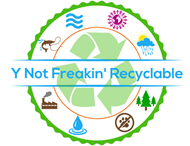#Education #Science #Tamil #Experiments #atom #தமிழ் #kids #children #elements
Greenhouse effect in Tamil || Global warming in Tamil || கிரீன்ஹவுஸ் விளைவு @Study Times Ed
Gases that trap heat in the atmosphere are called greenhouse gases. This section provides information on emissions and removals of the main greenhouse gases to and from the atmosphere. For more information on the other climate forcers, such as black carbon, please visit the Climate Change Indicators: Climate Forcing page.
Carbon dioxide (CO2): Carbon dioxide enters the atmosphere through burning fossil fuels (coal, natural gas, and oil), solid waste, trees and other biological materials, and also as a result of certain chemical reactions (e.g., manufacture of cement). Carbon dioxide is removed from the atmosphere (or “sequestered”) when it is absorbed by plants as part of the biological carbon cycle.
Methane (CH4): Methane is emitted during the production and transport of coal, natural gas, and oil. Methane emissions also result from livestock and other agricultural practices, land use and by the decay of organic waste in municipal solid waste landfills.
Nitrous oxide (N2O): Nitrous oxide is emitted during agricultural, land use, and industrial activities; combustion of fossil fuels and solid waste; as well as during treatment of wastewater.
Fluorinated gases: Hydrofluorocarbons, perfluorocarbons, sulfur hexafluoride, and nitrogen trifluoride are synthetic, powerful greenhouse gases that are emitted from a variety of household, commercial, and industrial applications and processes. Fluorinated gases (especially hydrofluorocarbons) are sometimes used as substitutes for stratospheric ozone-depleting substances
How long do they stay in the atmosphere?
Each of these gases can remain in the atmosphere for different amounts of time, ranging from a few years to thousands of years. All of these gases remain in the atmosphere long enough to become well mixed, meaning that the amount that is measured in the atmosphere is roughly the same all over the world, regardless of the source of the emissions.
How strongly do they impact the atmosphere?
Some gases are more effective than others at making the planet warmer and “thickening the Earth’s blanket.”
For each greenhouse gas, a Global Warming Potential (GWP) was developed to allow comparisons of the global warming impacts of different gases. Specifically, it is a measure of how much energy the emissions of 1 ton of a gas will absorb over a given period of time, relative to the emissions of 1 ton of carbon dioxide (CO2).
Carbon dioxide (CO2) is the primary greenhouse gas emitted through human activities. In 2020, CO2 accounted for about 79% of all U.S. greenhouse gas emissions from human activities. Carbon dioxide is naturally present in the atmosphere as part of the Earth’s carbon cycle (the natural circulation of carbon among the atmosphere, oceans, soil, plants, and animals). Human activities are altering the carbon cycle–both by adding more CO2 to the atmosphere and by influencing the ability of natural sinks, like forests and soils, to remove and store CO2 from the atmosphere.
Transportation. The combustion of fossil fuels such as gasoline and diesel to transport people and goods was the largest source of CO2 emissions in 2020, accounting for about 33% of total U.S. CO2 emissions and 26% of total U.S. greenhouse gas emissions.
பைங்குடில் விளைவு அல்லது பசுமை இல்ல விளைவு அல்லது பசுமைக்குடில் விளைவு (இலங்கை வழக்கு: பச்சை வீட்டு விளைவு’ Greenhouse Effect) என்பது, பூமியின் (அல்லது வேறு கோள்களின்) மேற்பரப்பில் உள்ள வெப்பக் கதிர்வீச்சானது, வளிமண்டலத்தில் இருக்கும் பைங்குடில் வளிமங்களினால் உறிஞ்சப்பட்டு, மீண்டும் வளிமண்டலத்தில் எல்லாத் திசைகளிலும் கதிர்வீச்சாக வெளிப்படும் தோற்றப்பாடு ஆகும்.
இயற்கையில் சூரியனிலிருந்து வெளிப்படும் ஒளிக் கதிர்வீச்சானது, பூமியை அடையும்போது, வளிமண்டலத்தில் உள்ள வளிமமும், முகிலும், நிலத்தில் உள்ள மண்ணும், நீரும் ஒரு பகுதி ஒளிக்கதிர்களைத் தெறிப்பதனால், அவை மீண்டும் வளிமண்டலத்தை விட்டு விண்வெளிக்குள் சென்று விடும். இன்னொரு பகுதிக் கதிர்வீச்சை நிலப்பகுதி உறிஞ்சி, அதன் குறிப்பிட்ட பகுதியை மீண்டும் கண்ணுக்குப் புலப்படும் ஒளியை விடக்கூடிய அலைநீளம் கொண்ட அகச்சிவப்புக் கதிரான வெப்பக் கதிர்வீச்சாக வெளியேற்றும். அந்த அகச்சிவப்புக் கதிர்களில் ஒரு பகுதி வளிமண்டலத்தினுள் வெளிவிடப்படுவதுடன், இன்னொரு பகுதி வளிமண்டலத்தினூடாக விண்வெளியினுள் சென்று விடும். இதன்மூலம் வளிமண்டலத்தின் வெப்பநிலை சீராக வைத்துக்கொள்ளப்படும். ஆனால் வளிமண்டலத்தில் இருக்கும் பசுமைக்குடில் வளிமங்கள் அதிகரிக்கும்போது, வளிமண்டலத்தினூடாக வெளியேற எத்தனிக்கும் அகச்சிவப்புக் கதிர்கள் வெளியேற முடியாமல் இவற்றினால் பிடிக்கப்பட்டு, வளிமண்டலத்தினுள்ளாகவே பல திசைகளிலும் வெளியேறும். இதனால் வளிமண்டலத்தின் வெப்பநிலை இருக்க வேண்டிய அளவைவிட அதிகரிக்கும். இது பசுமைக்குடில் விளைவினால் பூமியின் வளிமண்டலத்திற்கு ஏற்படும் பாதிப்பாகும்.[
source
Tags Deforestation effect global Global Warming global warming in tamil meaning global warming in tamil speech global warming in tamil video global warming reasons in tamil greenhouse greenhouse effect and global warming in tamil greenhouse effect b.ed in tamil greenhouse effect in tamil greenhouse effect tamil greenhouse gases in tamil greenhouse tamil nadu Study tamil times warming கரனஹவஸ வளவ
Check Also
Global Warming Pictures|| Save🌏 plz👈😔#shorts #viral
Global Warming Pictures|| #savewater #pollution #globalisation #saveearth #planttree source
 Pollution Climate Change Holocene Deforestation Population Acidification Y Not Freakin' Recyclable
Pollution Climate Change Holocene Deforestation Population Acidification Y Not Freakin' Recyclable



